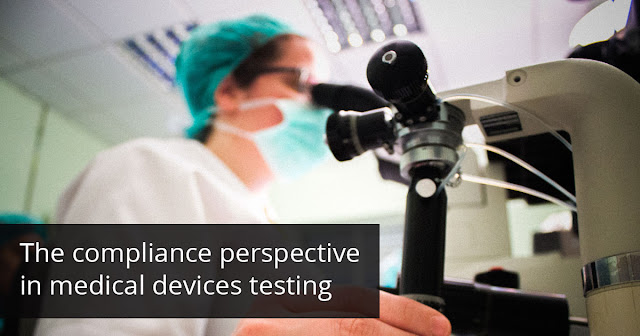Organizations are embracing
digital technologies to give customers omnichannel experiences and scale up
their business volumes. The disruptive nature of these technologies has allowed
companies to shore up their capabilities for storage, processing, and
analytics. Developments such as social media, mobility, analytics, IoT, and
smart devices are enabling digital transformation
and determining how users engage with businesses. The production demand in
companies has gone through the roof thanks to the changing market dynamics and
growing competition. This demand for scale has necessitated the expansion of
the legacy systems and inclusion of the user ecosystem. The latter encompassing
social media, personal devices, and cloud, among others expects a superior
customer experience.
With shortening time to
market and the need to ensure Continuous Integration and Continuous Delivery
(CI and CD), the role of QA has changed. It has moved from the earlier
waterfall model of ‘testing after development’ to ‘testing alongside
development’ of Agile/DevOps. As customer experience has become the determining
factor in the adoption of digital products, the role of QA has become critical.
This is more so due to the need to validate software across interfaces,
platforms, devices, browsers, and networks. With the demand for continuous
builds gaining ground, the development and QA teams should go beyond the status
quo. They should aim at preventing defects rather than taking the usual
reactive approach. Thus, QA assumes the role of digital quality engineering. This involves the management,
maintenance, and development of IT systems with enhanced quality standard.
Today, quality assurance
goes beyond functional testing and covers non-functional parameters as well.
These include security, usability, performance, accessibility, and
compatibility. Thus, digital quality
engineering is a nimble model underpinned on parameters such as being
agile, intelligent, automated, and on cloud. It goes into assessing,
optimizing, and ensuring customer experience (CX), every time.
How quality
engineering services impact digital transformation
As digital transformation
helps enterprises to reorient strategies, streamline workflows, optimize the
cost of operations, and enhance quality, the software quality engineering
services make the below-mentioned impact.
·
Analyzing
user behavior to optimize CX quality: Analytics solutions run through user data patterns to derive business
intelligence. The use of AI through automated algorithms helps in analyzing the
user data on bounce rates, average time spent, or user inflow, to determine the
trends. For example, webpages with high bounce rates or loading speeds can mean
performance issues. Also, AI-driven QE
services can analyze the user behaviour pattern and give fresh insights
to developers about incorporating new features or functionalities.
·
Test Driven
Development (TDD) and Behaviour Driven Development (BDD): The two popular approaches to software development
require unit testing of the code before conducting other tests. The enterprise quality engineering team
needs to ensure the testing process is quick. It does so by pitting quality via
API validation versus UI-driven test cases. The BDD approach is geared towards
ensuring acceptance outcomes. Here, the software
quality engineering services implement the QA steps using automation
scripts as defined by the user story. These two development approaches require
better collaboration among various stakeholders - teams representing digital quality engineering,
development, and management.
·
Enable ‘on
demand’ usage with ‘on cloud’ model: Delivering customer experience can be a costly affair with upfront
investments on infrastructure, devices, and tools. Further, add maintenance
cost to the updation of browser or device variants, and you are staring at huge
CapEx. This calls for moving to the cloud platform where tools and
infrastructure can be dynamically provisioned based on demand. For example, the
experts at any quality engineering
company can execute compatibility testing by hosting automated scripts
on the cloud. Thereafter, virtual machines can be provisioned with myriad
OS-browser combinations to conduct the tests. Thus, QA teams can maintain a
dynamic testing ecosystem that can address the changing requirements. The
ecosystem can eliminate the need for infrastructure setup or license procurement.
Conclusion
Software applications are
primed to provide enhanced customer experiences. They do so by interacting with
the accompanying digital ecosystem - devices, browsers, operating systems, and
networks, among others. The applications need to be glitch-free and overcome
hurdles like evolving technologies, diverse market demands, and cost pressures,
among others. QE services are
increasingly being sought to deliver great customer experiences by harnessing
agile, intelligent, and automated processes. They can help enterprises to stay
up the competitive curve, deliver value for money, and optimize the customer
experience.
This article is originally
published on it.toolbox.com.






